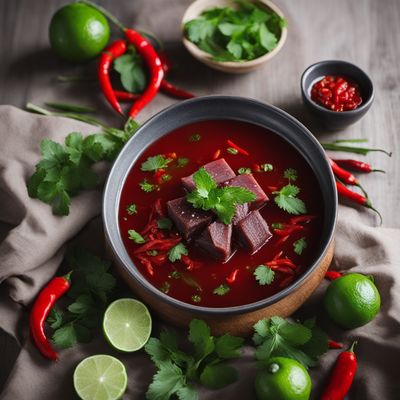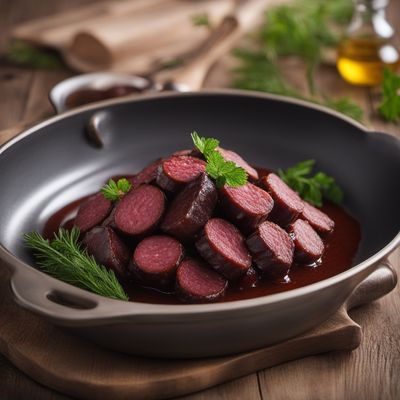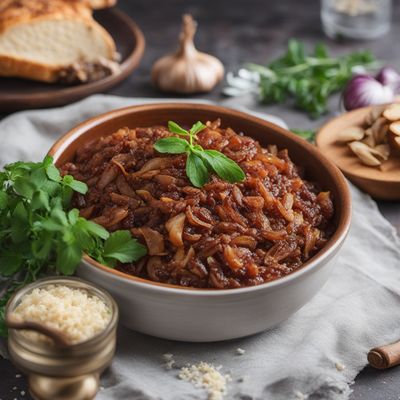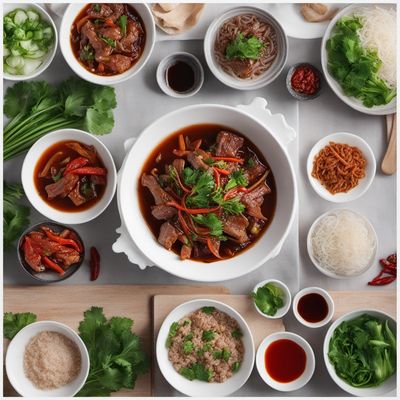
Ingredient
Animal blood
The Crimson Essence: Unveiling the Secrets of Animal Blood
Animal blood, whether from mammals like cows and pigs or poultry like chickens and ducks, is a dark, viscous liquid that plays a significant role in culinary traditions globally. It is known for its deep red color, thick consistency, and iron-rich composition. Animal blood can vary in taste and texture depending on the species, diet, and preparation method. It can range from mild and earthy to slightly metallic or gamey, with a smooth or slightly gelatinous texture when cooked.
Origins and history
The use of animal blood in cooking dates back centuries and is deeply rooted in cultural and historical practices. It has been a staple ingredient in many traditional dishes, such as blood sausages, black pudding, and blood-based soups or stews. Different cultures have embraced animal blood as a valuable resource, utilizing it for its nutritional benefits and unique flavor. From European blood-based delicacies to Asian blood-based dishes like dinuguan in the Philippines or blood tofu in China, animal blood has played a significant role in diverse culinary traditions.
Nutritional information
Animal blood is a nutrient-dense ingredient, rich in iron, protein, vitamins, and minerals. It provides essential amino acids, contributes to red blood cell production, and supports overall health and vitality.
Allergens
Animal blood may pose allergenic risks for individuals with specific allergies to animal proteins or components found in blood. It is important to exercise caution and consult with a healthcare professional if you have any concerns.
How to select
When selecting animal blood, whether fresh or frozen, it is crucial to ensure its quality and freshness. Look for bright red color, free from any off-putting odors or discoloration. If purchasing from a butcher or farmer's market, inquire about the source and handling practices to ensure safety and quality.
Storage recommendations
Animal blood should be stored in airtight containers in the refrigerator and used within a short period. Fresh animal blood is highly perishable and should be consumed or cooked promptly to maintain its freshness and quality.
How to produce
Producing animal blood at home is not recommended due to safety concerns and the complexity of the process. It is best to rely on professional sources or specialized suppliers for obtaining animal blood.
Preparation tips
Animal blood can be used in various culinary applications. It can be incorporated into dishes like blood sausages, blood pancakes, or used as a thickening agent in stews and soups. To prevent coagulation, it is essential to mix the blood with other ingredients or cook it at low temperatures. Additionally, animal blood can be used as a natural food coloring agent, adding a vibrant red hue to certain dishes.
Culinary uses
Animal blood is commonly used in dishes such as blood sausages, black pudding, blood-based soups, and stews. It adds a unique flavor and richness to these preparations, enhancing their overall taste and texture.
Availability
Animal blood is commonly available in regions where dishes utilizing blood are part of the culinary tradition. It can be found in butcher shops, specialty meat markets, and certain supermarkets.
More ingredients from this category
Recipes using Animal blood » Browse all

Tiết Canh - Traditional Vietnamese Blood Pudding
Savory Delight: A Taste of Vietnam's Blood Pudding Tradition

Russian-style Blood Sausage (Krovyanaya Kolbasa)
Savory Russian Blood Sausage: A Hearty Delight

Korean Sundae Sausage
Savory Delight: Korean Sundae Sausage with a Twist

Kaszanka with Caramelized Onions
Savory Polish Delight: Kaszanka with a Sweet Twist

Betawi-style Blodpalt
Savory Betawi Blood Dumplings: A Unique Twist on Traditional Swedish Cuisine

Canadian Chinese Style Tiết Canh
Savory Canadian Chinese Style Gelatinous Pork Blood Soup

Homemade Estonian Verivorst (Blood Sausage)
Savory Delight: Authentic Estonian Verivorst Recipe

Czernina - Traditional Polish Duck Blood Soup
Savory Delight: A Taste of Poland's Czernina

Asturian-style Morcilla de Burgos
Asturian Black Pudding Delight

Kentucky-style Duck Blood Pudding
Southern Delight: Kentucky-style Duck Blood Pudding

Portuguese Chicken Cabidela
Savory Delight: Portuguese Chicken Cabidela with a Tangy Twist

Ugandan-style Spiced Blood Sausage
Savory Delight: Ugandan Spiced Blood Sausage

